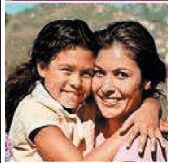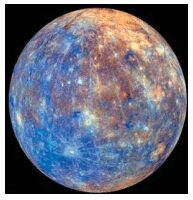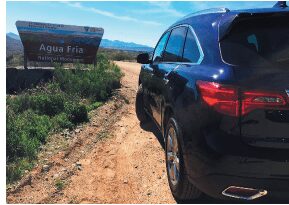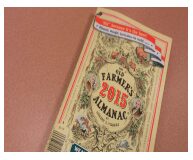1. ADEQ Sustainable Management of Rual and Small Systems Workshop. This free workshop will help[ utilities address a full range of challenges and improve the management of their operations and infrastructure
- How to deliver increasingly efficient and higher quality services
- How to improve long-term sustainability and increase resiliency
- How to use the Small Systems Guidebook to Effective Utility Management to make improvements at your system
Utilities will learn how to make improvements in the ten key management areas, focusing fi rst on their most pressing challenges
May 12, 2015
Dept of Development Services Building – 2351 W 26th Street – (Avenue B, next to Walmart) Yuna, AZ
Registration 8:30 a.m. Workshop 9 a.m. to 4 p.m.
TEN KEY MANAGEMENT AREAS
- Product Quality
- Emplyee Leadership and Development
- Financial Viability
- Infrastructure Stability
- Water Resource Adequacy
- Customer Satisfaction
- Operational Optimization
- Operational Resiliency
- Community Sustainability
- Stakeholder Understanding/Support
AGENDA
ª Introductions and Workshop Objectives
- Overview of Key Management Areas
- Utility Self Assessment Exercise
- Lunch
- Improving Outcomes Exercise Practices, Tools and Measures Discussion
- …and more
To register, go to: http://content.govdelivery.com/attachments/AZDEQ/2015/05/04/fi le_attachments/387484/SustainableMgmt_Yuma.pdf
2. Don’t Forget Your Mother! Mothers Day is this Sunday and if your’s is alive, you need to communicate your love to her.
Mother’s Day is a holiday honoring motherhood that is observed in different forms throughout the world. The American incarnation of Mother’s Day was created by Anna Jarvis in 1908 and became an official U.S. holiday in 1914. Jarvis would later denounce the holiday’s commercialization and spent the latter part of her life trying to remove it from the calendar. While dates and celebrations vary, Mother’s Day most commonly falls on the second Sunday in May and traditionally involves presenting mothers with flowers, cards and other gifts.

Celebrations of mothers and motherhood can be traced back to the ancient Greeks and Romans, who held festivals in honor of the mother goddesses Rhea and Cybele, but the clearest modern precedent for Mother’s Day is the early Christian festival known as “Mothering Sunday.” Once a major tradition in the United Kingdom and parts of Europe, this celebration fell on the fourth Sunday in Lent and was originally seen as a time when the faithful would return to their “mother church”—the main church in the vicinity of their home—for a special service. Over time the Mothering Sunday tradition shifted into a more secular holiday, and children would present their mothers with fl owers and other tokens of appreciation. This custom eventually faded in popularity before merging with the American Mother’s Day in the 1930s and 1940s.

Following the success of her first Mother’s Day, Jarvis—who remained unmarried and childless her whole life—resolved to see her holiday added to the national calendar. Arguing that American holidays were biased toward male achievements, she started a massive letter-writing campaign to newspapers and prominent politicians urging the adoption of a special day honoring motherhood. By 1912 many states, towns and churches had adopted Mother’s Day as an annual holiday, and Jarvis had established the Mother’s Day International Association to help promote her cause. Her persistence paid off in 1914 when President Woodrow Wilson signed a measure officially establishing the second Sunday in May as Mother’s Day.

More phone calls are made on Mother’s Day than any other day of the year. These h holiday chats with Mom often cause phone traffic to spike by as much as 37 percent. Source: http://www.history.com/topics/holidays/mothers-day
3. Apache-Sitgreaves National Forests Issues Red Flag Warning. Imposes fire restrictions due to winds, humidity. Go to www.fs/usda/gov/asnf to see the newly signed forest-wide order (01-15-577) to be used when campfires, smoking and use of torches or open flames are prohibited during Red Flag Weather warnings.
A RED FLAG being flown from our fire danger sign identifies red flag conditions are in effect, and it is the responsibility of the National Weather Service (NWS) forecast offices to implement the Red Flag Warning when conditions exist.

4. Astroshed. May’s Activities/ Catch Mercury at its evening best The innermost planet shines brightly in the evening sky during early May
Mercury shines brightly in the evening sky during early May.
Mercury shines brightly in the evening sky during early May. You can find the innermost world to the lower right of brilliant Venus.
Mercury climbs quickly into view after sunset in early May as it hits the peak of its best evening appearance of 2015. The innermost planet orbits the Sun a bit like a moth drawn to a streetlight. The Sun’s glare hides Mercury much of the time, but at regular intervals, the world soars far enough from our star to show up just after sunset or before sunrise. This year, Mercury comes into view on evenings in January, May, September, and December; it appears before dawn in February, June, and October.
The inner planet reaches greatest elongation the night of May 6/7, when it lies 21° from the Sun. For observers at midnorthern latitudes, Mercury then appears 11° high in the west-northwest 45 minutes after sunrise. A week earlier, on April 30, it passes 2° south of the Pleiades star cluster (M45). The planet shines around magnitude 0 during this period, so it should show up with naked eyes. Try binoculars if you can’t fi nd it right away in the twilight sky.
Unfortunately, Mercury’s appearance doesn’t last long. The planet fades as it falls back into brighter twilight. It glows at magnitude 1.0 on the 11th when it passes 8° north (to the upper right) of similarly bright Aldebaran, the constellation Taurus’ brightest star. Mercury disappears from view just a week later.

Fast facts:
- Mercury orbits the Sun at an average distance of 36 million miles (58 million kilometers) but covers a broad range from 29 million miles to 44 million miles (46 million km to 70 million km). Closest planet to the sun.
- Mercury takes just 88 days to complete one orbit of the Sun.
- Mercury takes 59 days to rotate once on its axis.
- With a diameter of 3,032 miles (4,879km, or 38 percent of Earth’s), Mercury is the smallest planet in the solar system.
- Mercury’s surface temperature ranges from -280˚F to 800˚F

5. Upper Agua Fria Watershed Partnership. 2015 Maricopa County Five Year Floodplain Management Plan (Audubon AZ ’ s Tice Supplee is on this volunteer committee): Open House, April 21, 2015, 10:30-1, 2801 W. Duran go, 85009, Laurie Miller 602-485-5880. UAFWP and individuals have the opportunity to provide input via a stakeholder questionnaires — needed by May 7th — one for organizations and one for individuals living in Maricopa County. Go to website: Flood Control District of Maricopa County — Floodplain Management Plan Update to fill out questionnaire which is also attached.
LA for example is spending a lot of money to remove concrete sides to channelized LA River … .Mary is doing response from UAFWP. Idea: start to buy floodplain areas which have been “ developed ” for human uses to allow rivers space to flood naturally.
* 2015 Priorities- Possibilities- Projects * Water Quality downstream from Iron King Superfund Site * Mayer Water District – * Agua Fria Cleanup south of BBC? * Project to slow water down on the upper reaches of the Watershed? After we see Henry ’ s set up on Mingus in June, smaller work group potentially meet in September at Hamernicks to try to scope an effort, say a pilot project, to model ways to slow water down … .possible partners … .think ahead! * Other: Cliff’s tables on climate change, Phoenix temp rising .9 degrees F a decade, Precip falling .3 inches a decade; ADOT on idea for reversible lanes on I 17 in future, as a means to aid weekend and accident congestion and to facilitate emergency evacuation of the Phoenix area; “ The Man Who Planted Trees ”… book … .per Mary;NAU/Horseshoe Ranch/ G&F Dept project on trees which ought to be planted to help watersheds in arid areas … FYI: For a tour of Phoenix Waste Water Treatment Plan per Tim: protocols are in place for visitors … .
Next Meeting: Tuesday, June 2 , 2015, will be at Henry Dahlberg’s Mingus Springs. MAP will be included with meeting announcement and agenda.

6. Farmer’s Almanac :May Weather.
May 1 thru 13 : Temperature 2˚ above normal. Precipitation .5”.
May 14 thru 20th:Scattered Thunder storms.
May 21 thru 27 Temps turning hot
7. New Legislation: On May 5, 2015, the Governor’s Regulatory review Council approved the ADEQ rulemaking concerning Title 18, Chapter 9, Article 10, Arizona Pollutant Discharge Elimination System -Disposal, Use, and Transportation of Biosolids, amending R18-9-1002 and R18-9-1015. Changes are effective 60 days after the agency files a certificate with the Secretary of State.
Contact Elizabeth Conrad if you have any further questions. 602.542.2058 | elizabeth.conrad@azdoa.gov
8. National Trends in Potable Water Reuse. Verde River Basin Partnership presents “National Trends In Water Reuse” on May 9, 2015 from 10:00 a.m. to 12 p.m. at the GPUU Congregation, Prescott

As water scarcity and concerns about nutrient impacts on waters receiving discharged treated effluent increase, closed-loop recycling of water is gaining interest. In many cases, potable reuse has proven to be less expensive than deploying reclaimed water through pipeline networks separate from the potable system, and technology advances have demonstrated that potable reuse can be done safely and reliably.
On May 9, Guy Carpenter, national manager of the Carollo Engineers water reuse/resources group, will explore national trends in potable water reuse when he speaks to the Citizens Water Advocacy Group (CWAG) from 10 a.m. to 12:00 p.m. at the Granite Peak Unitarian Universalist Congregation building, 882 Sunset in Prescott (two blocks behind True Value).
Carpenter will review the water quality criteria that have been developed by national health experts, and the treatment technologies and management methods being employed to meet them. He will also discuss public perception and resources that are available to help communities make sound decisions about the best way to make use of recycled water
Guy Carpenter is a vice president and shareholder of Carollo Engineers and leads the fi rm’s water reuse technical practice. In this role, he also oversees the research and development work Carollo does related to water reuse, including seven groundbreaking studies that have contributed to the development of treatment technology, risk mitigation, and protection of public health recommendations for potable reuse. He has served on the WateReuse Association board of directors for four years, and will become the Association’s President in September. Guy was instrumental in developing the Association’s national water reuse database. He was one of 40 water leaders appointed to the Arizona Governor’s Blue Ribbon Panel on Water Sustainability and is currently leading the Treatment Technology Subcommittee of the Steering Committee on Arizona Potable Reuse. He is also an elected board member of the Central Arizona Project (CAP), which delivers 1.6 million acre-feet per year of Colorado River water to three counties in which 90% of the population in Arizona lives.

9. Household Hazardous Waste Collection ThisWeekend. Do you have unused chemicals, oils or pesticides sitting in your shed or garage? The City of Tucson is hosting a Household Hazardous Waste (HHW) collection this Saturday from 8 a.m.-noon at the Eastside Service Center, 7575 E. Speedway Blvd. Drop off at HHW is free for City of Tucson residents. There is a fee of $10 for each television and $2 for each monitor brought in without a computer. Household Hazardous Waste Program: http://1.usa.gov/1dm4x4Y
10. University of Arizona Conference

University of Arizona Water Resources Research Center 2015 Annual Conference June 9-10, 2015 Wild Horse Pass Hotel and Casino, Chandler, Arizona
Tuesday, June 9 – 12:30 to 5:30 pm
- 11:30-12:30 Registration
- 12:30-1:00 Traditional Prayer and Blessing. Opening Remarks
- 1:00-1:45 Keynote Speaker: John Echohawk, Founder of Native American Rights Fund. Arizona water issues from a tribal perspective
- 1:45-3:00 The Nature of Tribal Water Rights. Tribal representatives will discuss the history and future of negotiating Native American water rights in Arizona. 3:00-3:20 Break
- 3:20-4:35 Tribal Water Successes and Challenges. Highlights of tribal water successes and challenges will be discussed by a panel of Arizona tribal water management leaders.
- 4:35-4:55 Tara Jackson, President, Arizona Town Hall
- 4:55-5:30 Keynote Speaker: Ofelia Zepeda, Professor of Linguistics, University of Arizona. Native American poetry reading.
- 6:00-8:00 Evening Reception
Wednesday, June 10 – 7:00 am to 5:30 pm
- 7:00-8:00 Continental Breakfast
- 8:00-8:10 Traditional Prayer and Blessing
- 8:10-8:30 Senator Carlyle Begay, Arizona State Legislature, District 7
- 8:30-9:15 Spiritual and Ceremonial Views of Water. Panelists will reflect on how tribes relate to water in songs and offerings, and how water is respected in indigenous communities.
- 9:15-10:00 Keynote Speaker: David DeJong, Author of “Forced to Abandon our Fields,” the Agricultural History of the Gila River
- 10:00-10:20 Break
- 10:20-11:35 Tribal Riparian Restoration Success Stories. Arizona tribes have a long history of restoring native riparian areas. Tribal representatives will discuss current efforts in riparian
- 11:35-1:15 Luncheon, Recognizing 10th Anniversary of Arizona Water Settlements Act, Public Law 108-451
- 1:15-2:30 Arizona Groundwater, A Precious Resource. Tribal water professionals will discuss management decisions related to groundwater, diversifying water portfolios with groundwater recharge.
- 2:30-3:45 The Next Generation of Tribal Water Use: Our Youth Represent the Future.
- 3:45-4:00 Break
- 4:00-4:30 Keynote Speaker: Harry Walters, Navajo Historian. Water Culture of Indigenous Communities in the Arid Southwest: A Look Forward • 4:30-5:15 Learning from the Past, Looking to the Future.
- 5:15-5:30 Closing Comments, Traditional Prayer and Blessing For more information: https://wrrc.arizona.edu/WRRC-conference-2015/agenda.
